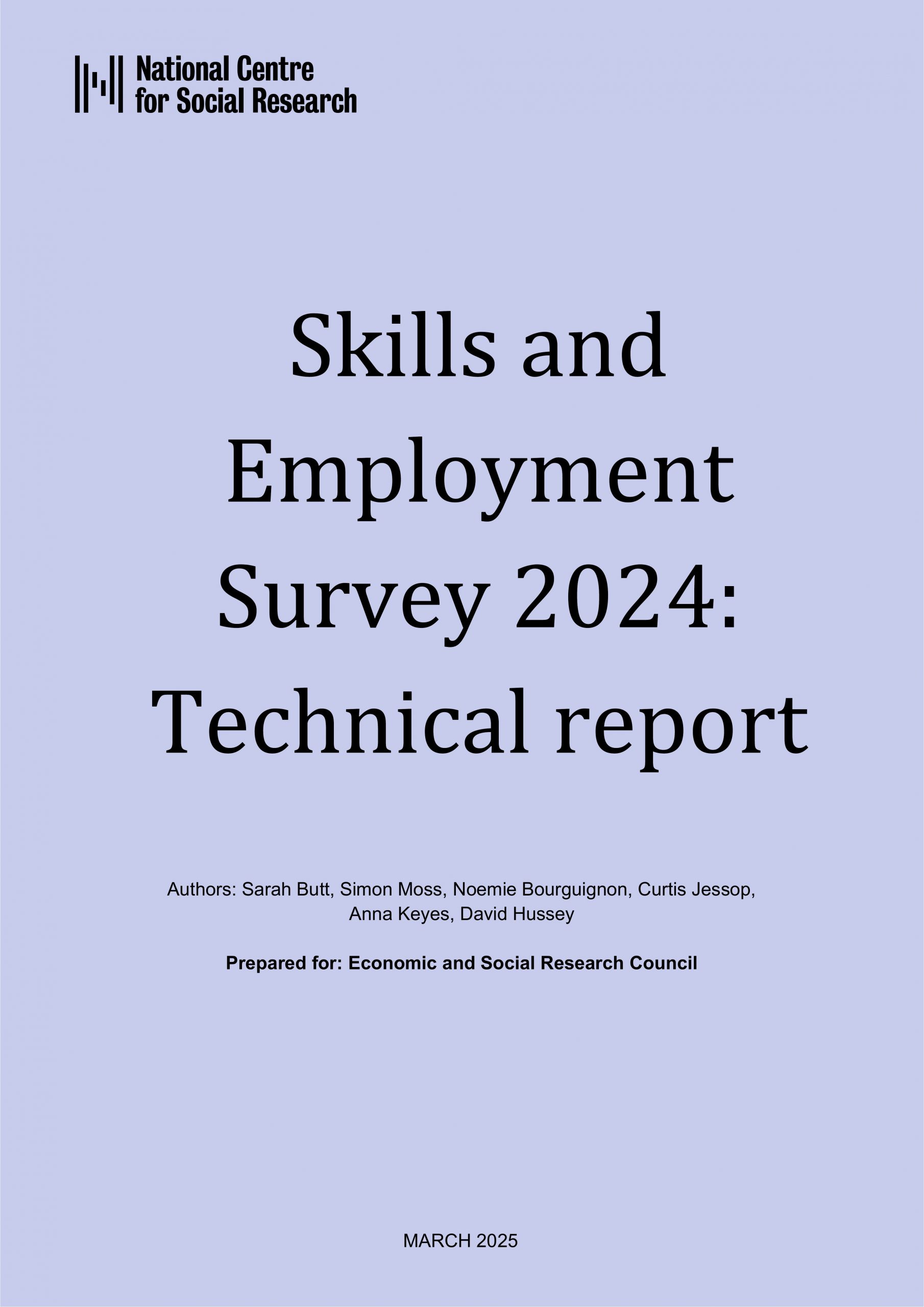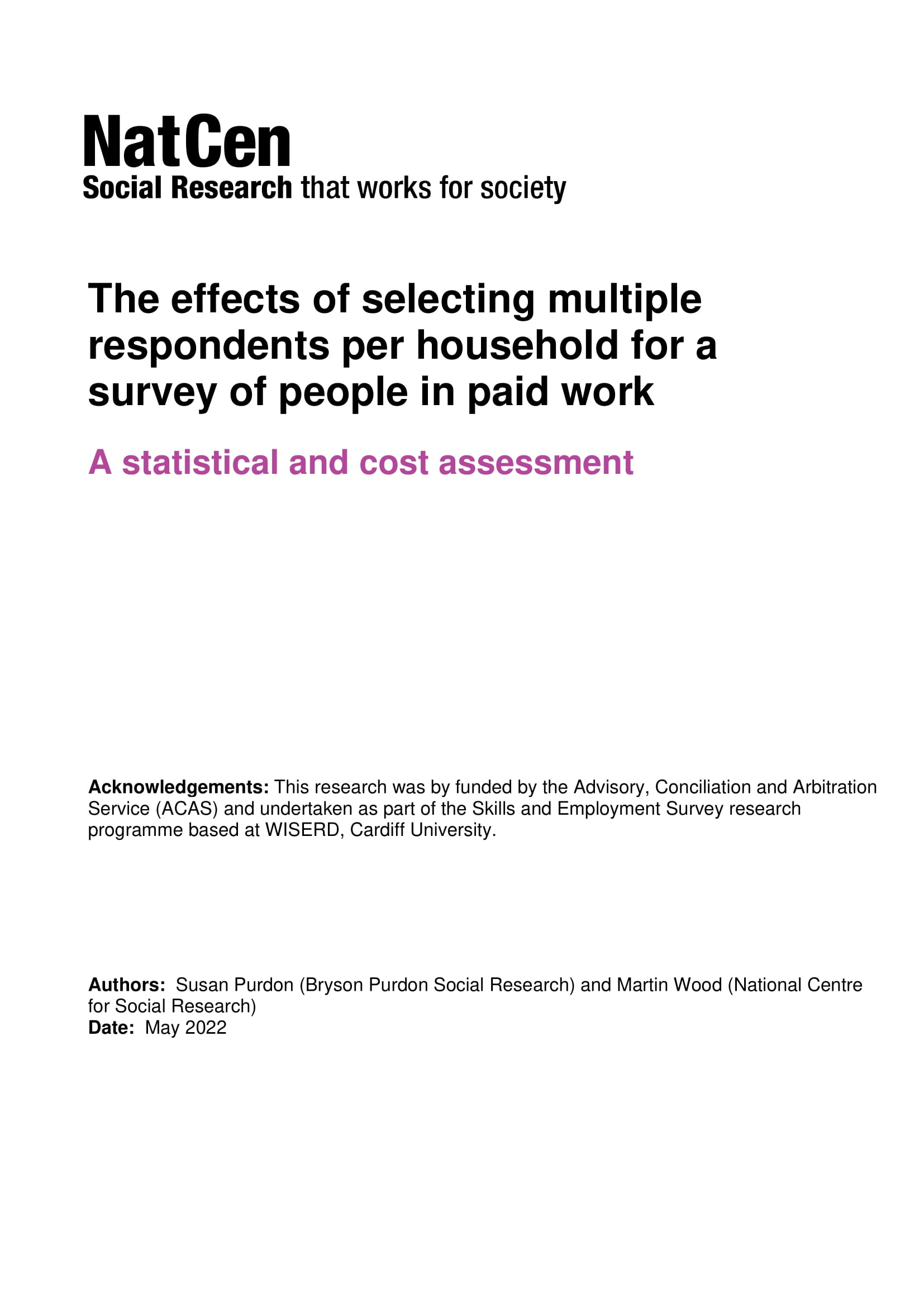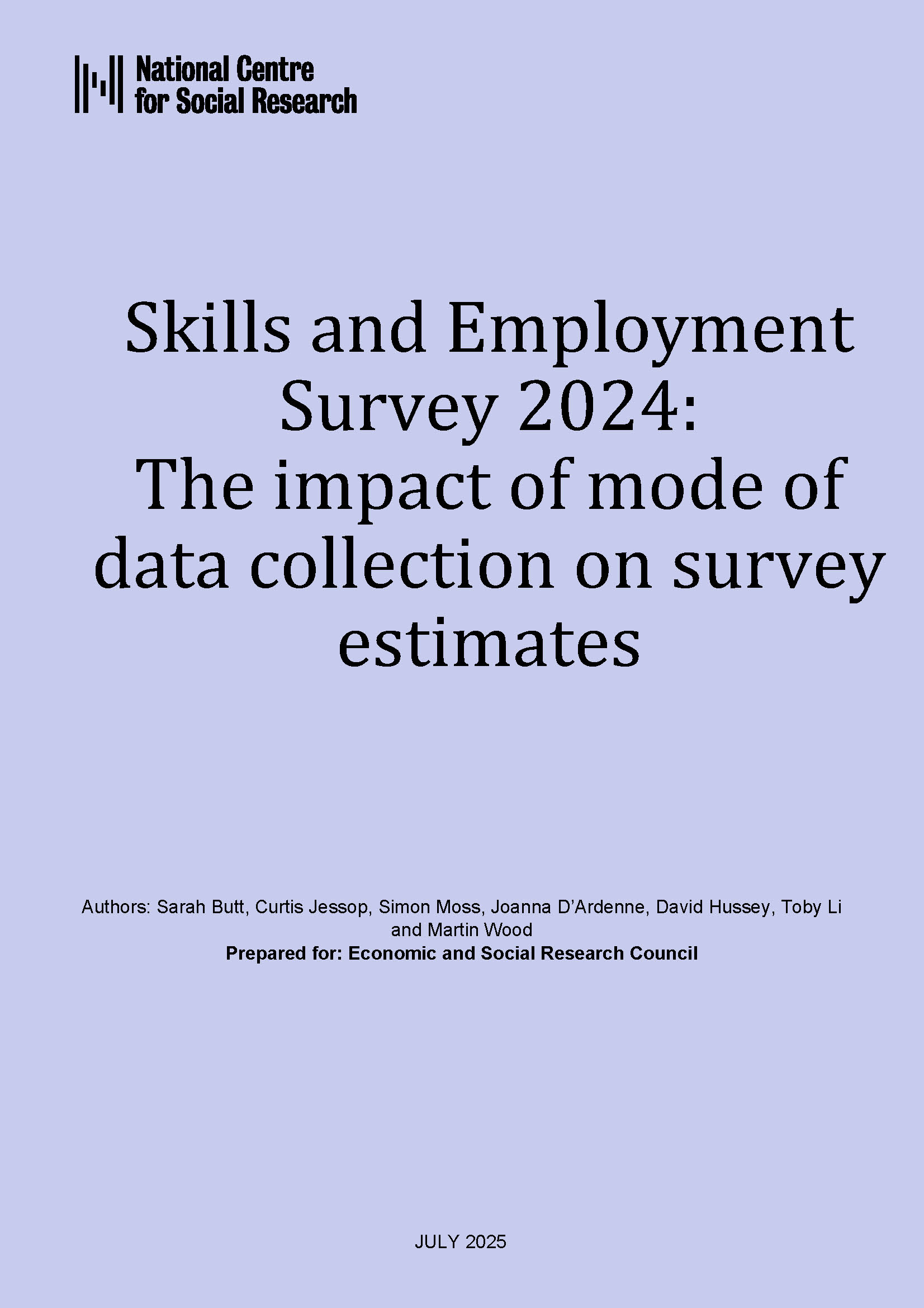Overview
Given recent societal and policy changes, the UK faces an increased need to know how the world of work has changed. The overarching aim of the Skills and Employment Survey 2024 (SES2024) is to collect robust survey data on the skills and employment experiences of people aged 20-65 working in the UK in 2024. SES2024 will produce a valuable and unique addition to the social science data resource infrastructure.
In an innovation for the series, the 2024 data were collected in two ways: just over 2,800 interviews were conducted face-to-face (F2F), while an additional 2,650 interviews were carried out online. Data collected F2F will be comparable with those gathered from earlier surveys, allowing researchers to measure how the labour market has changed since 2017. This includes the impact that recent changes – such as Covid-19, Brexit and the cost of living crisis – and long-term trends – such as increasing digitalisation, low and stagnating productivity growth, and an ageing population – are having on the working lives of people living in Britain.
Report launch events
Recordings of the two report launch events – held in April (Work and Well-being) and May (Skills, Technology and The Changing Nature of Work) 2025 – are available for viewing on YouTube for those who want to relive the experience or see them for the first time.
Short reports
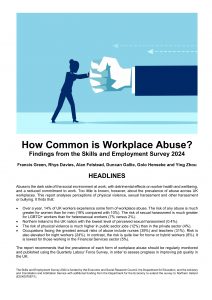 How Common is Workplace Abuse?
How Common is Workplace Abuse?
Workplace abuse has detrimental effects on worker health and wellbeing. However, too little is known about its prevalence. This report analyses perceptions of physical violence, sexual harassment and other harassment or bullying.
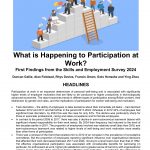 What is Happening to Participation at Work?
What is Happening to Participation at Work?
Participation at work is an important determinant of personal well-being and is conducive to higher productivity. This report examines trends in different types of participation, their distribution by gender and class, and the implications for worker well-being and motivation.
 Has the Tide Turned for Trade Unions?
Has the Tide Turned for Trade Unions?
This report examines key trends in union membership and perceptions in the influence that unions have. It also examines the demand for union representation among those employed at non-unionised workplaces and how these demands vary between different population subgroups.
 What Makes Work Meaningful?
What Makes Work Meaningful?
Drawing on new questions introduced in SES2024, this report examines perceptions of meaningful work, how they vary across different labour market groups, and the types of work environment that effectively cultivate a greater sense of meaning.
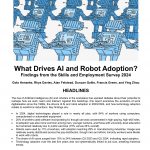 What Drives AI and Robot Adoption?
What Drives AI and Robot Adoption?
The rise of Artificial Intelligence (AI) and robotics in the workplace has sparked debates about their potential to reshape how we work, learn and interact. Against this backdrop, this report examines the evolution of work digitalisation since the 1990s, the drivers of AI and robot adoption in 2023/2024, and how technology adoption relates to workforce reductions.
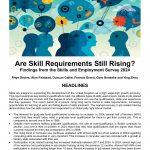 Are Skill Requirements Still Rising?
Are Skill Requirements Still Rising?
Skills are integral to supporting the development of the United Kingdom as a high wage-high growth economy. This report examines key trends in qualifications held, the different types of skills used at work, trends in job related training and learning at work and the degree to which workers can use the qualifications, skills and experience that they possess.
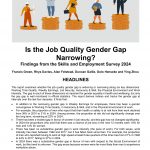 Is the Job Quality Gender Gap Narrowing?
Is the Job Quality Gender Gap Narrowing?
This report examines whether the job quality gender gap is widening or narrowing along six key dimensions: Working Time Quality, Weekly Earnings, Job Security, Autonomy & Skill, the Physical Environment and Work Intensity. The report derives indices and tracks the gender gap at intervals over the last four decades.
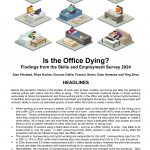 Is the Office Dying?
Is the Office Dying?
This report examines historical trends in those working exclusively at home (homeworkers) and those working partly in the office and partly at home (hybrid workers). It identifies which groups have been affected most/least and highlights the factors most closely associated with workers’ ability to carve out dedicated spaces of work within the home to create a home office.
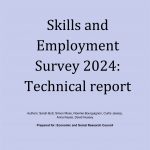 NatCen SES2024 Technical Report
NatCen SES2024 Technical Report
Outlines in detail how the data were collected along with the questionnaires used.
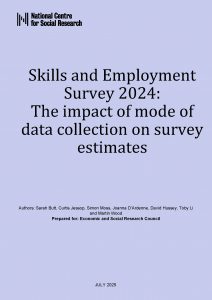 NatCen Mode Analysis Report and Tables
NatCen Mode Analysis Report and Tables
In 2024 the Skills and Employment Survey was conducted not only face-to-face but also via a web-telephone survey. This parallel run provides a way to explore the potential impact of the change in sampling design and mode on survey estimates. This report and tables summarise the magnitude and direction of differences observed in the survey estimates between the two data collection designs.




















